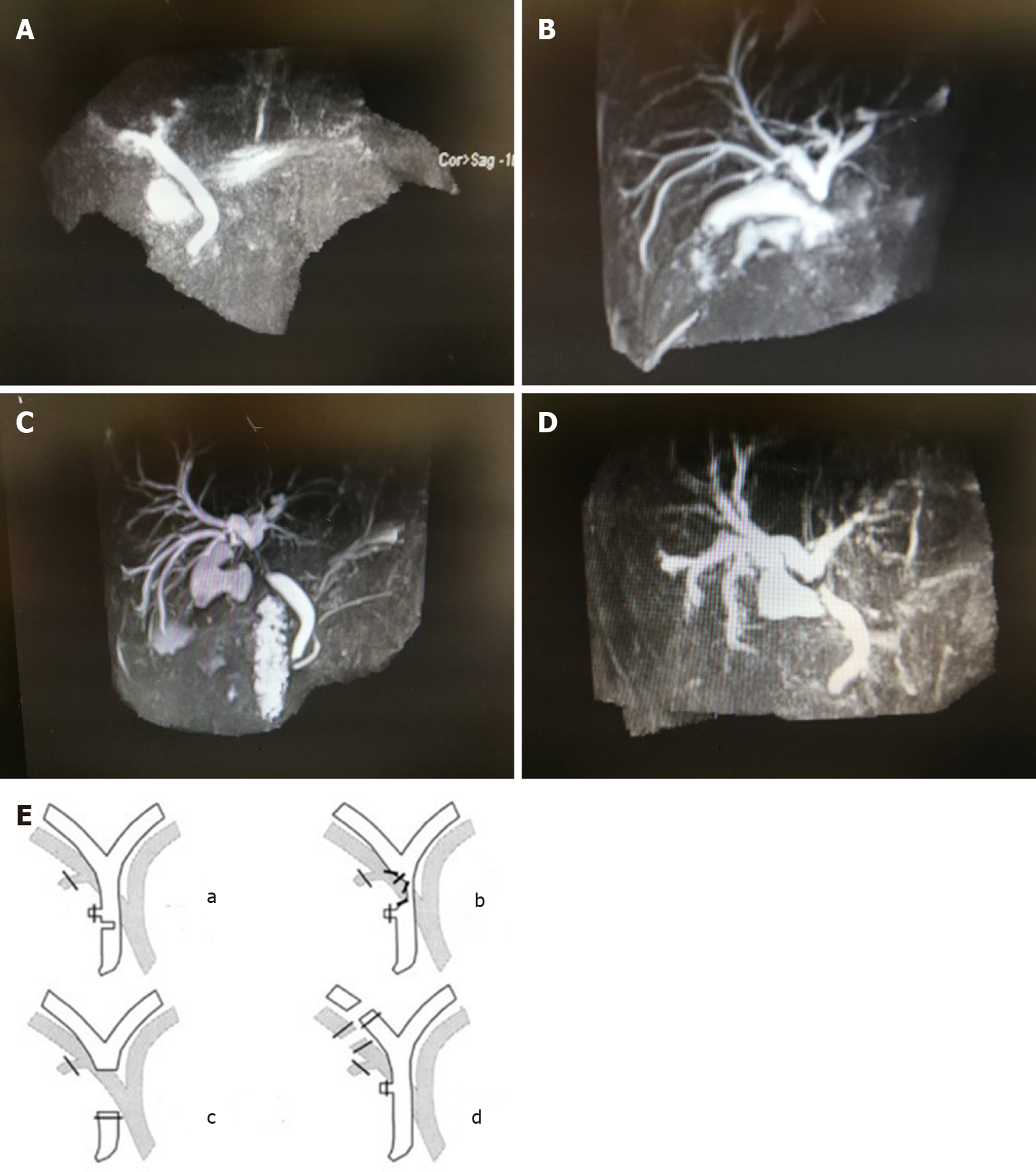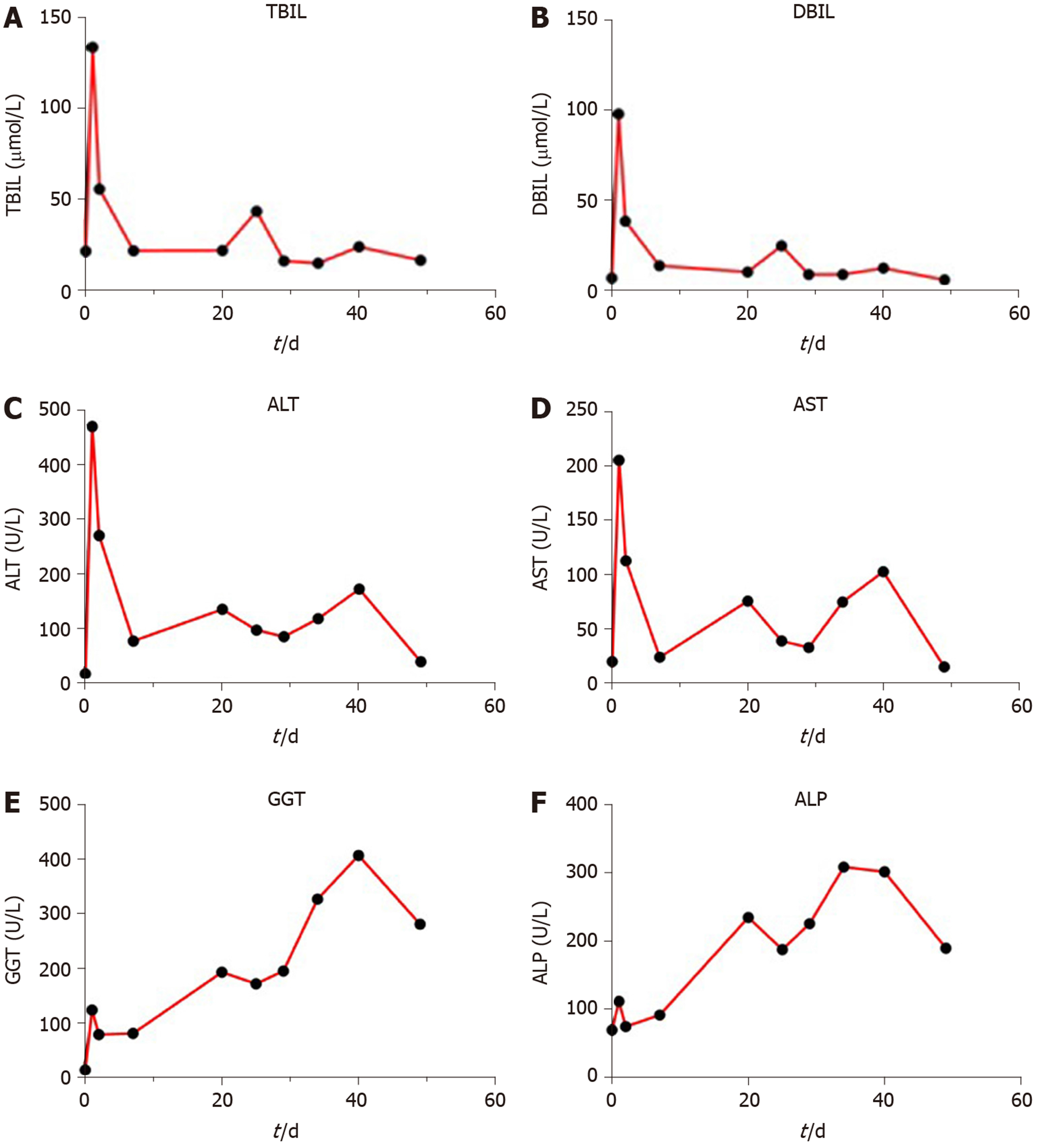Copyright
©The Author(s) 2020.
World J Clin Cases. Aug 26, 2020; 8(16): 3567-3572
Published online Aug 26, 2020. doi: 10.12998/wjcc.v8.i16.3567
Published online Aug 26, 2020. doi: 10.12998/wjcc.v8.i16.3567
Figure 1 Changes in magnetic resonance imaging pre- and post-operatively.
A: No clear cholecyst and no stricture of the biliary ducts pre-operatively; B: Magnetic resonance imaging presentation before releasing the ligature: there is obvious interruption of the biliary tract; C: The 26th day after releasing the ligature: Interruption of the biliary tract is prolonged compared to B; D: The 47th day after releasing the ligature: interruption of the biliary tract is shorter than C; E: Stewart-Way classification injury, and the present case is classified as class II.
Figure 2 Changes in bilirubin and liver enzymes: Total bilirubin; direct bilirubin; glutamic-pyruvic transaminase; glutamic-oxalacetic transaminase; gamma-glutamyl transpeptidase; and alkaline phosphatase.
A: Total bilirubin changes: After releasing the ligature, the value decreases and there is an aggravated procedure on the 24th day post-operatively; B: Direct bilirubin changes: After releasing the ligature, the value decreases and there is an aggravated procedure on the 24th day post-operatively; C: Glutamic-pyruvic transaminase changes; D: Glutamic-oxalacetic transaminase changes; E: Gamma-glutamyl transpeptidase changes; F: Alkaline phosphatase changes: There are similar changes in C and D, E and F. TBIL: Total bilirubin; DBIL: Direct bilirubin; ALT: Glutamic-pyruvic transaminase; AST: Glutamic-oxalacetic transaminase; GGT: Gamma-glutamyl transpeptidase; ALP: Alkaline phosphatase.
- Citation: Fan Z, Pan JY, Zhang YW. Recovery from a biliary stricture of a common bile duct ligature injury: A case report. World J Clin Cases 2020; 8(16): 3567-3572
- URL: https://www.wjgnet.com/2307-8960/full/v8/i16/3567.htm
- DOI: https://dx.doi.org/10.12998/wjcc.v8.i16.3567














